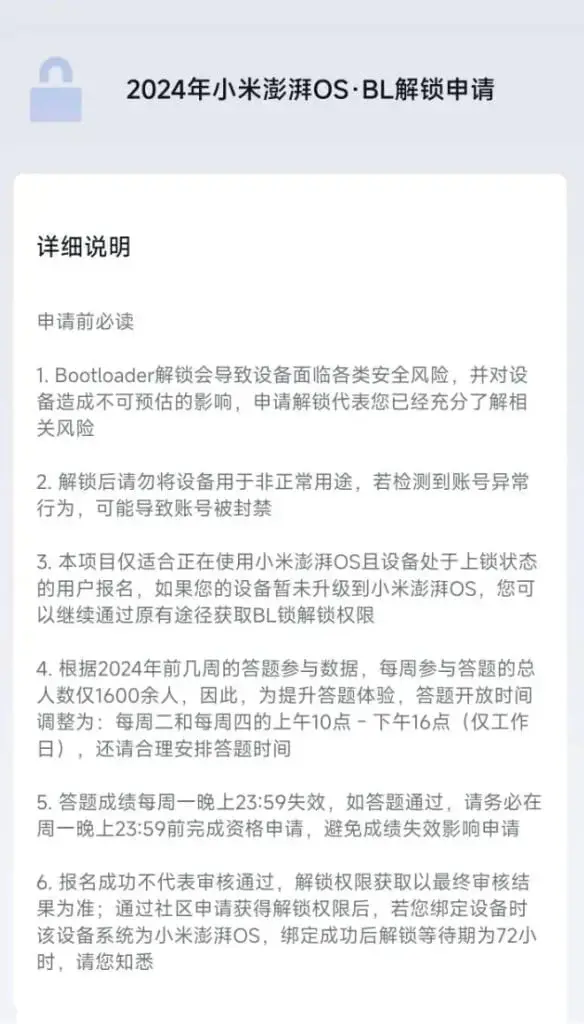Xiaomi has made important updates to its Bootloader (BL) unlocking policy that will take effect starting January 1, 2025. These changes indicate a major shift in how the company deals with device customization, introducing stricter regulations to address security issues and prevent misuse. Below is a comprehensive summary of the new policy, its effects, and crucial information for users.
Major Changes in the Policy
New Unlocking Process:
The unlocking procedure now requires that everything, from answering eligibility questions to applying, registering, linking the account to the device, unlocking it, and using it after unlocking, must be done on the same device. This change is designed to provide better integration and to stop unauthorized modifications to devices.
Shortened Unlock Validity:
After a user gets the approval to unlock, they have to finish the binding and unlocking within 336 hours (or 14 days). If they miss this deadline, the permission to unlock will no longer be valid and can’t be extended or given again.
Limits on Unlocks
One Device Per Year:
In the past, users could unlock three devices each year. Now, this has been cut down to just one device annually, which will affect users in Xiaomi’s home market of China as well as those around the world. Users who have unlocked a device within the last year must wait for that one-year period to be over before they can unlock another.
Real-Name Verification:
Every step in the unlocking process has to be done by a verified holder of a Xiaomi account. If someone misuses the unlock eligibility for another person’s device, they will face serious consequences, which may include a permanent ban from their account and possible legal action.



